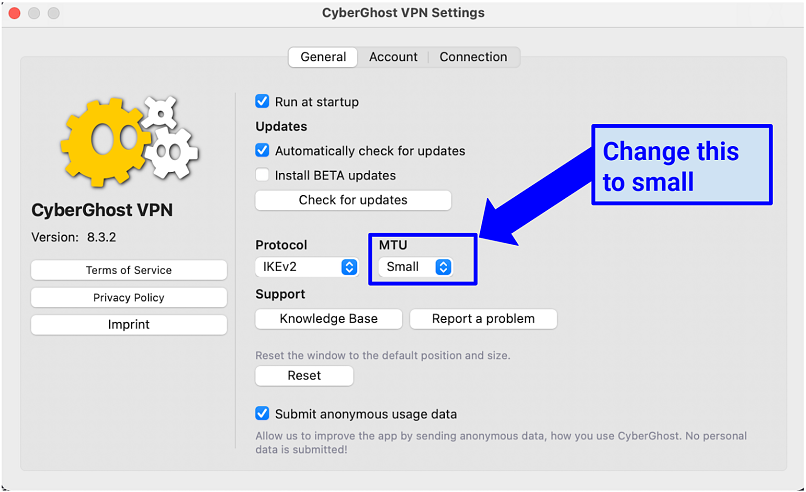Featured
Table of Contents
Vpn Stopped Working: Here Are 4 Quick Tips To Get It Back

The Routing and Remote Gain access to snap-in lives within the Microsoft Management Console, referred to as the MMC. There are several ways to access the MMC. You can pick the console from the Start menu's Programs alternatives, within the Administrative Tools folder within Windows server's Control board or by typing mmc at a command timely.
As Tech, Republic's Brandon Vigliarolo shows within his video at the start of this article, the Services console shows the status of the Routing and Remote Gain access to entry. From within the Services console and with the Routing and Remote Access entry highlighted, you can click Start the Service or right-click the entry and select Restart.
Often the VPN client and VPN server are set to utilizing different authentication approaches. Validate whether an authentication error is the problem by opening the server console. Yet another technique of accessing the MMC is to type Control+R to open a command timely in which you can type mmc and struck Enter or click OK.
If the entry isn't present, click File, select Add/Remove Snap-in, choose the Routing and Remote Gain access to alternative from the options and click Add, then OK. With the Routing and Remote Access snap-in included, right-click on the VPN server and click Characteristics. Review the Security tab to confirm the authentication approach.
Remote Access (Vpn And Aovpn) Troubleshooting Guidance
Guarantee the VPN customer is set to the authentication approach defined within the Security tab. Usually the items just evaluated are accountable for many VPN connection refusal errors. But other fundamentals must be proper, too. For example, if the Windows Server hosting the VPN hasn't joined the Windows domain, the server will be unable to confirm logins.
IP addresses are another fundamental aspect for which administration must be correctly set. Each Web-based VPN connection normally uses 2 various IP addresses for the VPN customer computer system. The very first IP address is the one that was appointed by the customer's ISP. This is the IP address that's used to develop the initial TCP/IP connection to the VPN server online.

This IP address typically has the very same subnet as the local network and hence enables the customer to interact with the local network. When you established the VPN server, you should set up a DHCP server to appoint addresses to clients, or you can create a bank of IP addresses to appoint to customers directly from the VPN server.

If this alternative is picked and the effective remote gain access to policy is set to permit remote access, the user will have the ability to connect to the VPN. Although I have been not able to re-create the scenario personally, I have heard reports that a bug exists in older Windows servers that can cause the connection to be accepted even if the efficient remote access policy is set to deny a user's connection.
Virtual Private Networks (Vpns) - Ncsc.gov.uk
Another typical VPN issue is that a connection is effectively developed but the remote user is unable to access the network beyond the VPN server. Without a doubt, the most common reason for this issue is that authorization hasn't been granted for the user to access the whole network. To permit a user to access the entire network, go to the Routing and Remote Gain access to console and right-click on the VPN server that's having the issue.
At the top of the IP tab is an Enable IP Routing check box. If this check box is made it possible for, VPN users will have the ability to access the remainder of the network, presuming network firewalls and security-as-a-service settings permit. If the checkbox is not picked, these users will have the ability to access just the VPN server, but nothing beyond.
If a user is dialing directly into the VPN server, it's usually best to configure a static route between the client and the server. You can set up a static path by going to the Dial In tab of the user's properties sheet in Active Directory Users and Computers and selecting the Apply A Fixed Path check box.
Click the Include Path button and then enter the destination IP address and network mask in the area provided. The metric must be left at 1. If you're using a DHCP server to appoint IP addresses to customers, there are a couple of other issues that could cause users not to be able to go beyond the VPN server.
Steps For A Better Vpn Rollout And Troubleshooting
If the DHCP server assigns the user an IP address that is currently in usage elsewhere on the network, Windows will discover the dispute and prevent the user from accessing the remainder of the network. Another typical issue is the user not receiving an address at all. The majority of the time, if the DHCP server can't designate the user an IP address, the connection will not make it this far.
254.x. x variety. If the client is assigned an address in a variety that's not present within the system's routing tables, the user will be unable to browse the network beyond the VPN server. Other issues can add to this problem, too. Make sure the resources the user is attempting to gain access to are actually on the network to which the user is linking.
A VPN connection to the other subnet might, in fact, be required. A firewall or security as a service option might also be to blame, so don't forget to review those services' settings, if such components exist between the VPN server and the resources the user looks for to reach.
The first possibility is that one or more of the routers involved is performing IP packet filtering. IP package filtering could prevent IP tunnel traffic. I recommend inspecting the customer, the server and any machines in between for IP packet filters. You can do this by clicking the Advanced button on each device's TCP/IP Properties sheet, choosing the Options tab from the Advanced TCP/IP Settings Characteristic sheet, picking TCP/IP Filtering and clicking the Properties button.
Latest Posts
Best Vpn Services For 2023 - Is Yours There?
10 Best Business Vpn Services [2023]: A Comprehensive ...
What Is A Vpn And How Does It Work?